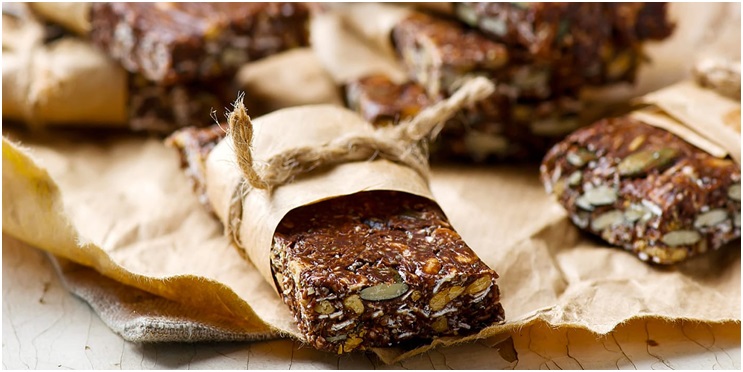Instructions to Choose A Truly Healthy Protein Bar

Stroll down any supermarket walkway, and you will undoubtedly find an item that looks a lot more grounded than it is as a general rule. Notwithstanding the advertising language promoting their healthy benefit (Organic! All normal! Loaded with protein!), a few assortments can contain more sugar than a piece of candy. Model: protein bars.
In any case, that doesn’t mean all protein bars need to avoid your storeroom. Some can be brilliant wellsprings of protein or calories when you’re in a hurry. Save 30% discount on your order using the Ambrosia Collective Coupon Code.
To assist you with figuring out which bars are reasonable, we asked Halle Saperstein, an enlisted dietitian with Henry Ford Health, about protein fundamentals and what to search for in a decent bar.
By and large, what is protein’s job in your eating routine?
Protein does a great deal. It assumes an essential part in the design, capability, and guidelines of your body’s tissues and organs. It assists with supplement transport. It conveys your electrolytes — sodium and potassium — into and out of your cells. It helps with taking nutrients to cells from your organs. It’s likewise a structure block for your muscles, skin, bones, blood, and ligament. Without adequate protein, our cells and tissues truly can’t work.
How does protein influence your muscles?
Protein assists you with upgrading muscle fix and development. It’s best in two hours after practice if you will have a protein source and you’re attempting to boost your muscle fix and growth. Once in a while, however, you want a smidgen of protein before working out. If you’re awakening and haven’t eaten in five or six hours, you might need some protein and carb sources before working out to make it a more effective exercise. There are a few specific proposals concerning when you ought to consume protein after a workout.
As an enlisted dietitian, what’s the situation with protein bars?
I’m not an enormous backer of protein bars; however, that doesn’t mean I don’t keep lower sugar assortments in that frame of mind at home. On occasion, we as a whole need a speedy nibble choice. What to recall is: Most protein bars — not all — have a ton of fillers in them. They’re more handled than entire food varieties and frequently contain whey and soy concentrate. Those fixings and a complete protein source will not be promptly used. So if you eat something previously or after an exercise, I would propose an entire food wellspring of protein like a banana and peanut butter or some milk or yogurt.
If you are nibbling on a protein bar, what fixings would be a good idea for you to search for?
The following are a couple of things to remember:
Carbs. A low-carb bar ought to be under 20 grams for every bar.
Protein. Search for fixings like whey and pea proteins.
Fiber. Search for bars with three grams or more for every serving. You’ll feel all the more full and be more customary.
Fats. A decent bar shouldn’t have any trans fats and ought to be low in immersed fats (under three grams for every serving).
Oils. Keep away from any bars with palm oil or portion oil (frequently remembered for bars covered with chocolate)
Sugar. On the off chance that sugar, sucrose, or high fructose corn syrup is the top fixing, don’t get it. Also, avoid sugar alcohols like xylitol, sorbitol, and maltitol — they cause swelling and gas and make a diuretic difference.
Are there particular bars or brands that you suggest?
The following are three I suggest:
- KIND’s Strong and Kind bars. They include 230 calories as well as 10 grams of protein.
- Lara Bars. Some have only three fixings, five grams of protein, and four grams of fiber.
- Rx Bars. They can be costly; however, they offer five grams of fiber and 12 grams of protein.
How much protein do we have to consume consistently?
It fluctuates broadly with your movement level. Most Americans need 0.8 grams of protein per kilogram of body weight. Yet, if you’re a competitor who practices enthusiastically consistently for an hour or somewhere in the vicinity, then, at that point, you want up to 1.2 grams of protein per kilogram of body weight, which likens to around 15 to 25 percent of your calorie needs. Yet, everyone’s body size is unique, so it fluctuates significantly.
Is there such a fantastic concept as an excessive amount of protein?
Indeed. Excessive protein beyond what you can be genuinely burdening our bodies, particularly the kidneys. Assuming you eat more protein than your body can use for muscle building or whatever else, in the long run, any excess can be put away as fat.
Should you eat protein bars on the off chance, you’re attempting to get thinner?
I ordinarily suggest protein bars as a little bite, not a dinner substitution. You’re likely to shed pounds if you eat a bar that is 200 calories versus a dinner that is 800 calories. Still, at the same time, you’re presumably not eating to the point of meeting your wholesome necessities, particularly assuming you’re practicing too.
Despite why you’re going after a protein bar, Saperstein recommends that you generally read the name cautiously and instruct yourself on healthful data. “What you see isn’t consistently what you get. “Organizations can make the crates look great and trick the purchaser,” Saperstein says.
For good recipes, cooking recordings, and more tips on good dieting, buy into getting a week-by-week email with our most recent posts.
Halle Saperstein, RD, is a clinical dietitian at Henry Ford West Bloomfield Hospital and appreciates showing the significance and advantages of a sound eating routine.